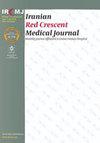Four-drug Combination Therapy for Venous Occlusive Disease Prophylaxis after Allogeneic Hematopoietic Stem Cell Transplantation
IF 0.2
4区 医学
引用次数: 0
Abstract
Hepatic sinusoidal occlusion syndrome (SOS) or venous occlusive disease (VOD) is a frequent complication of allogeneic Hematopoietic stem cell transplantation (allo-HSCT). The mortality rate of patients with severe VOD is extremely high. It is of utmost importance to explore practical ways to reduce the incidence of VOD. The present study aimed to evaluate the efficacy and safety of a prophylaxis strategy involving the combined use of prostaglandin E1 (PGE1), dalteparin, low molecular weight glucan dextran (LMWD), and ursodeoxycholic acid (UDCA). We conducted a single-center retrospective clinical observation of 225 patients who received allo-HSCT for hematological disorders between 2008 and 2022, all of whom received these four medicines for VOD. These 225 patients were within the age range of 6-58 years, and their donors were classified as related donors (75.5%) and unrelated donors (24.5%). All patients underwent a myeloablative conditioning regimen prior to transplantation. Each patient possessed at least one risk factor for VOD, and 167 (74.2%) cases were deemed to be at high risk. Ultimately, only two patients developed VOD, with an incidence of only 0.89%, of whom one was late-onset VOD. The bleeding rate was 32.9%, with predominantly grade 1-2 (93.2%). The incidence of bleeding aligns with findings reported in other literature. Remarkably, the mortality rate associated with bleeding during transplantation was a mere 1.8%, significantly lower than the average. The results of the study demonstrated the effectiveness and safety of the four PGE1-based medications in the prevention of VOD after allo-HSCT.异基因造血干细胞移植后静脉闭塞症预防的四药联合疗法
肝窦闭塞综合征(SOS)或静脉闭塞症(VOD)是异基因造血干细胞移植(allo-HSCT)的常见并发症。严重静脉闭塞症患者的死亡率极高。探索降低VOD发生率的实用方法至关重要。本研究旨在评估联合使用前列腺素 E1(PGE1)、达肝素、低分子量葡聚糖右旋糖酐(LMWD)和熊去氧胆酸(UDCA)的预防策略的有效性和安全性。我们对 2008 年至 2022 年期间因血液病接受allo-HSCT 的 225 例患者进行了单中心回顾性临床观察,所有患者均接受了上述四种药物治疗 VOD。这 225 名患者的年龄在 6-58 岁之间,他们的供体分为亲缘供体(75.5%)和非亲缘供体(24.5%)。所有患者在移植前都接受了髓质消融治疗。每位患者至少有一个VOD风险因素,其中167例(74.2%)被认为是高危患者。最终,只有两名患者发生了 VOD,发生率仅为 0.89%,其中一人是晚期 VOD。出血率为 32.9%,主要为 1-2 级出血(93.2%)。出血发生率与其他文献报道的结果一致。值得注意的是,移植期间与出血相关的死亡率仅为 1.8%,明显低于平均水平。研究结果表明,四种基于 PGE1 的药物在预防allo-HSCT 后 VOD 方面既有效又安全。
本文章由计算机程序翻译,如有差异,请以英文原文为准。
求助全文
约1分钟内获得全文
求助全文
来源期刊

Iranian Red Crescent Medical Journal
医学-医学:内科
自引率
0.00%
发文量
0
期刊介绍:
The IRANIAN RED CRESCENT MEDICAL JOURNAL is an international, English language, peer-reviewed journal dealing with general Medicine and Surgery, Disaster Medicine and Health Policy. It is an official Journal of the Iranian Hospital Dubai and is published monthly. The Iranian Red Crescent Medical Journal aims at publishing the high quality materials, both clinical and scientific, on all aspects of Medicine and Surgery
 求助内容:
求助内容: 应助结果提醒方式:
应助结果提醒方式:


